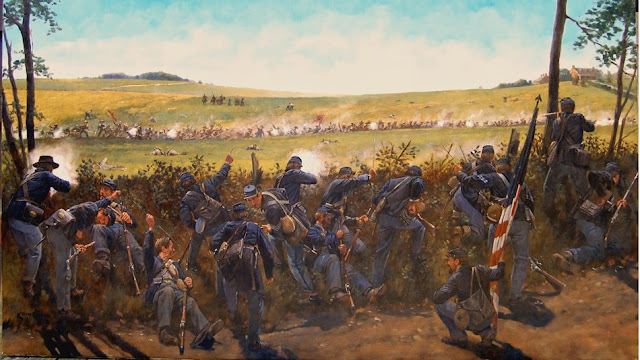With Cheatham's Division at Chickamauga

William Watts Carnes was attending the U.S. Naval Academy in Annapolis, Maryland when the Civil War began. Leaving the academy and returning home to Memphis, Tennessee, he helped raise a battery of artillery and went off to war. Carnes enjoyed an active service with the Army of Tennessee (see here ) and was in command of the battery at the Battle of Chickamauga. His battery was on the left of Cheatham's division on the afternoon of September 19, 1863 when it was well-nigh obliterated by a Union attack; Carnes' battery lost 38 of its 78 men and most of the horses were shot down, but Carnes' heroism in fighting his battery met with the approval of another experienced artilleryman, army commander Braxton Bragg. Leaving the shattered remnant of his battery in command of a lieutenant, Carnes went to work for General Preston Smith on his staff and Carnes experienced the second day of Chickamauga from the vantage point of a staff officer, giving hi...
















